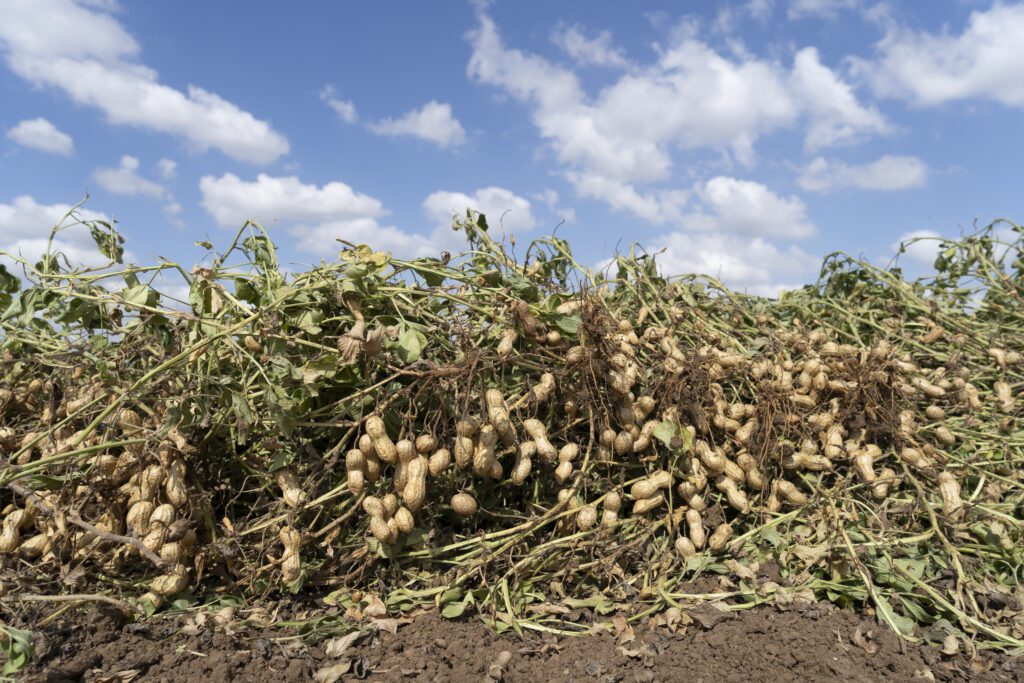by TERESA SCHIFFER
Sponsored by Farm Credit of Central Florida
What makes peanuts so unbelievably appealing? Could it be the protein, fat, and carbohydrate content? That does make them a satisfying snack. Maybe it’s the nostalgia we have for a simple peanut butter and jelly sandwich or a bag of roasted peanuts at the ballpark. Whatever the reason, peanuts have been popular in the U.S. since the Civil War, especially in the South, where they grow best.
An American Tradition
Although African slaves brought peanuts with them to North America in the 1700s, the ubiquitous legumes took quite a circuitous route to get here. There is some uncertainty about where peanuts actually originated, but it’s believed to be in South America, around Peru or Brazil. Artifacts indicate that the Incans were using peanuts as sacrificial offerings as early as 1500 B.C.
As Europeans explored South America, peanuts were carried across the Atlantic to Spain, where they then spread to Africa and Asia. Then Africans introduced them to North America, and in the early 1800s farmers in Virginia began growing peanuts commercially.
At first, peanuts were grown mainly for oil and as livestock feed. The underground pods were too difficult to grow and harvest to really take off until machinery was developed around 1900 that could plant, cultivate, and pick the peanuts. Thanks to P.T. Barnum’s hocking roasted peanuts in his traveling circuses, the crowds quickly acquired a taste for the quirky new treats that could be roasted, salted, or made into tempting candies and peanut butter.
Dr. George Washington Carver has been given much of the honor for inventing peanut butter, but his contribution to peanut science was actually far more significant. While peanut butter wasn’t exactly a new thing when it was introduced at the 1904 World’s Fair in St. Louis, Carver was instrumental in establishing peanuts as a significant commercial crop throughout the southern U.S. in the early part of the 20th century.
Peanuts in the Present
These days, peanuts are still a major crop for southern states, including Florida. Georgia is the top producer of peanuts, but Florida farmers plant about 150,000 acres of peanuts each year according to the USDA. This is mostly in the panhandle and parts of North Florida, though you can find sporadic peanut fields throughout the whole state.
Peanuts produce about 4,300 pounds per acre here in Florida, putting us in the top four of peanut-producing states, alongside Georgia, Alabama, and Texas. As of 2021, Florida’s peanut production was valued at $130 million by the Florida Department of Agriculture and Consumer Services.
Peanuts do very well in sandy, well-drained soils. Rotating the fields that they grow in with other non-legume crops helps keep pests and diseases down. Peanuts have a high moisture content when harvested, so having proper infrastructure in place to dry the plump pods is imperative. Growers typically allow them to dry to about 10 percent moisture when they are first dug, and then they can go into a peanut wagon to be further cured with warm air.
Boiled peanuts are a delicious regional snack enjoyed by many Southerners and are produced from “green” peanuts – peanuts that have been harvested but not dried. Despite their popularity in the South, boiled peanuts tend to be relatively unknown in other parts of the country – this is mainly because fresh peanuts can only be stored for a maximum of 10 to 14 days due to their high moisture content. However, online markets are opening up to provide avenues for peanut-lovers outside the South to acquire fresh peanuts through fast shipping methods so they might also enjoy the salty slurp of a steaming cup full of boiled peanuts!

